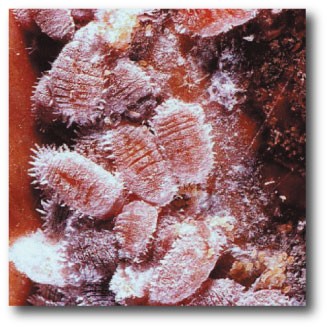Healthy Alternatives to Artificial Red Dye
Valentine's Day and the living is easy, and mostly in red. But have you ever looked at what's in that dye that makes all our icings, cakes, etc. that pretty bright red we've come to expect for Valentine's Day?
There are two common sources for the red dye used in food processing today. First is coal. Yup, that's the source for Red Dye #40. Research shows this dye is linked to cancer, ADHD, and loads of food allergies.

Then the next source is a BUG. I'd heard this before, but thought it was preposterous, so I went to snopes.com to see if it was truth or rumor. Turns out it's pure truth. The dye, cochineal (and its close cousin carmine-also known as carminic acid), are derived from the crushed carcasses of a particular South and Central American insect. These popular colorants, which today are used to impart a deep red shade to fruit juices, gelatins, candies, shampoos, and more, come from the female Dactylopius coccus, an insect that inhabits a type of cactus known as Opuntia. Ooo, yummy.
While this food dye hasn't been linked to any diseases, it is a known allergen. It's considered the more "natural" approach to food dying, but I still say "YUCK."
So you can probably guess where I'm headed: Instead of coloring treats with artificial red dye or crushed up bug carcasses, why not try one of these natural red dye alternatives for cupcakes, cookies and more?

For instance, the icing on these pretty cupcakes was made from beets. Well, actually, the water used to boil beets is what is used to color your powdered sugar. And you can do this with either fresh or canned beets.
If using fresh beets, cover them with water and boil in an enamel or a glass pan until barely done. Remove the beets and peel, slice, and chop them,
reserving the juice.
Return beets to the juice and soak them for 4 hours. Strain liquid and measure out 3/4 cup; add 2 teaspoons vinegar to the liquid.
If using canned beets, there's no need to cook them. Just strain out 3/4 cup of the liquid and add 2 teaspoons of vinegar. Beet dye can be kept for weeks in your refrigerator; it's nice to have natural dye on hand for your baking projects.
You can also create a beautiful red dye colorant from cranberries. You simply cover the berries with water and boil for two hours or so-mashing the berries
as they soften. Then cool and strain the liquid. Then as with the beet water, add your cranberry water to whatever you intend to color red.
Finally, as Valentine's Day passes, we find St. Patrick's Day and Easter coming up. So how about some natural yellow, blue, purple, and green dyes as well as red? Here's all you do:

YELLOW: Boil the outer skins of 5 yellow onions with 1 cup of water. OR you can boil 1 cup of daffodil, acacia, or crocus blossoms in enough water to cover them. Always use a covered glass or enamel pan and boil for 10 minutes or until the liquid turns a dark yellow. Strain the liquid and keep in the refrigerator to use as needed..

BLUE: Simmer ½ had of red cabbage, chopped, in 1 cup water until it turns dark green and is just tender. Strain the juice, which will turn blue. Or for a darker shade of blue, cover ½ cup of blueberries (fresh or frozen) in enough water to cover and simmer for 30 minutes. Mash the berries and strain the juice. If using canned blueberries, all you need to do is strain the juice.

PURPLE: People have been dying fabric for hundreds of years using blackberries, so why not color food with them? Unthaw ½ cup of frozen blackberries, or use ½ cup of fresh blackberries. Blend them for about 30 seconds. Strain and use the reserved juice.

GREEN: Boiling 1 cup of spinach in enough water to cover for 1 minute, then let simmer for 10 minutes. Strain the liquid.
So to recap: Always use a glass or enamel pan for making any natural food dyes. And here's to some not just beautiful, but healthy treats and desserts as we celebrate Valentine's Day and the other holidays coming our way.
- www.snopes.com
- www.mothernaturenetwork.com
- www.popsugar.com.au
- www.brittanymakes.com
- www.wikihow.com
 Alice Osborne
Alice Osborne
Weekly Newsletter Contributor since 2006
Email the author! alice@dvo.com
